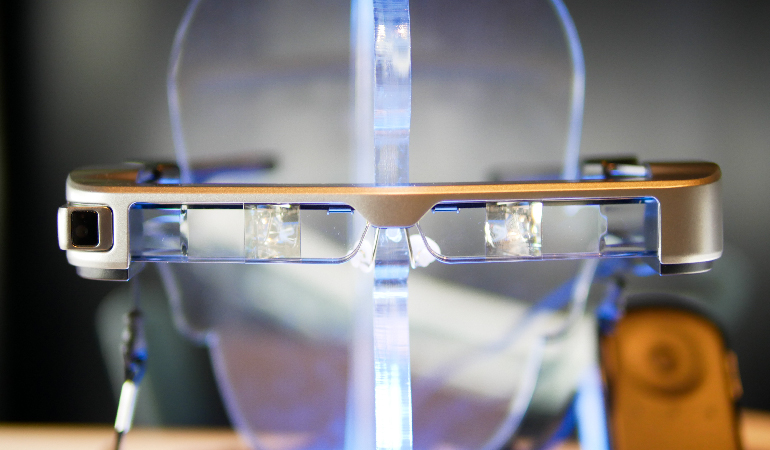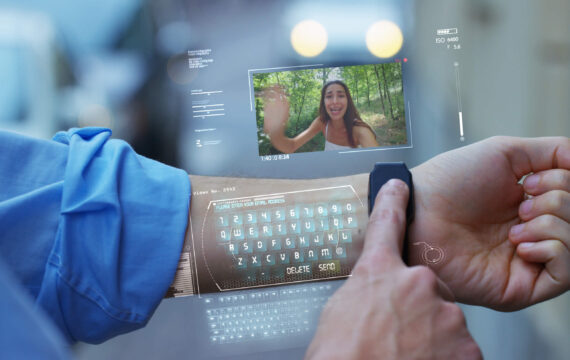AR and VR technologies have been around for a good while, but their adoption hasn’t been as rapid as one would expect, despite all the hype, massive investments, and efforts of virtual reality software developers. It turns out that the smartphones of the past were not fast enough to render highly realistic AR overlays on live camera feeds, and that the VR headsets that simple mortals could buy for money were inexplicably expensive, cumbersome, and didn’t provide the quality that consumers wanted.
Years later, and the efforts of hardware manufacturers and virtual reality software developers have finally turned the tide. Mobile CPUs are blazingly fast these days, and popular VR devices have shed many a pound both in terms of weight and retail price. Surprisingly, however, it’s not the regular consumers who are now seeing tons of potential in the augmented and virtual reality market. It’s the enterprise market that’s driving the industry now.
So what is the main reason behind the growing interest of businesses, large and small, in innovative VR and AR software solutions?
The challenges of the pandemic-affected reality
It goes without saying that we have never been more physically disconnected in our globalized world than during the months since the beginning of the COVID-19 pandemic. Flights that used to be a familiar routine are now off the menu. Handshakes are virtual. Many large offices are closed for good until further notice, while WFH policies have been extended until as far out as summer 2021.
These complex and unforeseen circumstances couldn’t but reignite the global interest in technologies capable of bringing people together again and making their daily interactions safer, more productive, and just more fun. The key challenges that businesses and individuals have to deal with during the pandemic can be narrowed down to a few items:
- Reduction in the number of direct physical interactions
- Reduction/avoidance of business travel
- Maintaining the same level of productivity and operational effectiveness
- Reduction in the size of field teams
The potential that augmented reality and virtual reality solutions hold for eCommerce, distance learning, real estate, entertainment, product marketing, and pretty much every other industry is truly massive. First and foremost, with VR and AR capabilities, businesses can save their customers the trouble of traveling to their offices, stores, or locations in these uneasy times. But that’s not all.
Companies with a large number of field specialists can use assistive AR technologies to coordinate the work of solo field workers with experts working from home or the corporate office. Not only does it enable employees to save on travel costs, but also to minimize their exposure to potentially unsafe environments.
Employee onboarding can be made virtual and include not just a regular text/audio/video bundle, but also a guided virtual tour across facilities or a training course for a particular type of equipment. The tour can be controlled by a remote HR person and fully comply with WFH requirements.
In a very similar fashion, consumers can benefit from easy-to-use and widely available AR applications to “try things on” or “fit things into” their interiors without leaving their homes. User manuals and assembly instructions can also be implemented in the form of AR apps, allowing users to perform fairly complex maintenance operations on their own.
This list can go on and on, but the key idea is that alternative reality technologies are finally starting to make perfect practical sense in a world that temporarily favors isolationism for the sake of a better, safer future.
Let’s take a look at the differences between AR and VR, and get familiar with their younger siblings.
What’s what in the world of AR and VR?
The landscape of alternative realities is divided into three distinct areas: AR, VR, and MR. Some experts also use the term XR, where X stands for a functional crossover between the technologies. First and foremost, it’s important to get the definitions straight, as not many people know the differences between them. So what is the difference between virtual reality and augmented reality?
AR
In its early days, AR (augmented reality) was mostly about superimposing objects and data onto a clean visor or glasses, allowing the user to have access to valuable information literally in front of their eyes. Heavy and cumbersome at first, these headsets gradually evolved to be fairly lightweight and elegant — such as the Epson Moverio glasses, for example.

Source: Slashgear
With time, however, the consumer AR market was conquered by smartphones and tablets, whose raw performance and built-in depth sensors enabled developers to build complex and very precise apps used for anything from AR-enabled online shopping to interactive AR games.
VR
The most culturally significant of all, VR (virtual reality) has been long touted as the future of science and entertainment. That still holds true, although progress hasn’t been as fast-paced as had been hoped. Even in 2020, VR remains expensive, requires powerful computers, and is yet to become mainstream.
On the technology side, the concept of VR relies on the full immersion of the user into a computer-generated world with a high degree of interactivity achieved using additional devices such as gloves, pointing devices or even VR suits.
While VR still hasn’t found its way into most households, it is a welcome addition to healthcare, engineering, industrial design, urban planning, architecture, and entertainment, where its unlimited ability to visualize large-scale environments or objects in great detail is essential.

VR/AR revenue ($B). Source: Digi-Capital.
MR
So what is MR? As the name suggests, MR (mixed reality) is a fusion of AR and VR, where an AR device has enough power and display capability to partially replace real surroundings with a computer-generated environment, mixing them in a single viewport. However, it’s a complex technology with a limited scope of application. As of 2020, Microsoft HoloLens remains the undisputed leader in this market segment.
Top augmented and virtual reality solutions in different industries
Unlike mainstream AR applications leaning towards games and general entertainment, enterprise VR and AR software solutions focus primarily on productivity, remote assistance, telepresence, and training. These goals hold true for virtually every industry, from healthcare to education.
The diverse potential of VR & AR applications

Source: Statista
Healthcare
Healthcare is one of the fastest-growing consumers of VR software solutions in the non-entertainment sector. The first-ever surgery streamed publicly in VR took place over 4 years ago, and virtual reality has been steadily gaining momentum in the industry ever since. Used primarily for training and patient rehab, VR has proved to be an invaluable asset to the medical community. A recent study by Harvard Business Review (conducted with the help of a surgical VR platform from Osso) found that VR training can boost the performance of surgeons by as much as 230% compared with conventional methods.
Engineering
The typical activities found in industrial design, civil engineering, and engineering in general, are a perfect match for VR and AR capabilities. The ability to quickly visualize complex objects and environments and place experts near or inside those structures has proved invaluable for continuous R&D in fast-paced industries such as construction, aviation, automotive design, and many others.

The benefits of alternative reality technologies can be observed at every step of the engineering process: from early-stage ideation and CAD design to manufacturing, assembly, maintenance, and employee training. For instance, Airbus uses VR extensively for aircraft design, inspection, and marketing. In a similar manner, its main competitor Boeing resorts to VR and AR software solutions to facilitate the work of its mechanics during assembly.
Virtual reality is truly helping us with our real daily tasks, while reducing time and costs.
Real estate
Traditionally, the real estate business is all about meeting would-be homeowners at properties and showing them around. With COVID-19 dictating the new rules of the real estate game, the industry is keen to adopt immersive technologies to achieve some or all of these goals:
- Fewer trips to properties
- Window-shopping from the comfort of the potential buyers’ current homes
- Higher conversions and reduced costs
- Virtually limitless customization capabilities
Goldman Sachs estimates the market of VR software solutions for real estate will reach $2.6 billion by 2025.
Bottom line
In a world that’s striving to stay connected while keeping a safe distance between individuals, AR, VR, and MR technologies are destined to succeed. They offer immersive experiences that can be quickly scaled, customized, and accessed remotely. They save time and money, reduce risks, boost learning effectiveness, and help people make educated decisions quicker than ever.
At the same time, despite the substantial progress on the hardware side and the gradually declining prices of AR/VR hardware, VR and AR software solutions are yet to catch up with the hardware they are supposed to run on. Regular consumers are still finding it hard to identify a decent area of application for virtual reality with enough value to motivate them to spend hundreds of dollars on a shiny new VR headset. AR developers should concentrate on polishing their knowledge of ARCore and ARKit to make AR experiences as flawless and simple as using a phone to scan a QR code or take a photo.
Regardless of all of these problems, both augmented and virtual reality are thriving and getting acknowledged in a growing number of industries, so there is absolutely no doubt that we will be seeing remarkable headway in these areas in the nearest future.
With AR and VR getting increasingly more limelight on the B2B scene, it is important that these features be implemented by competent virtual reality software developers with sufficient business domain expertise and a proven track record of delivering commercial projects. Contact us today for a tour around our diverse portfolio and an overview of our capabilities in this area.

